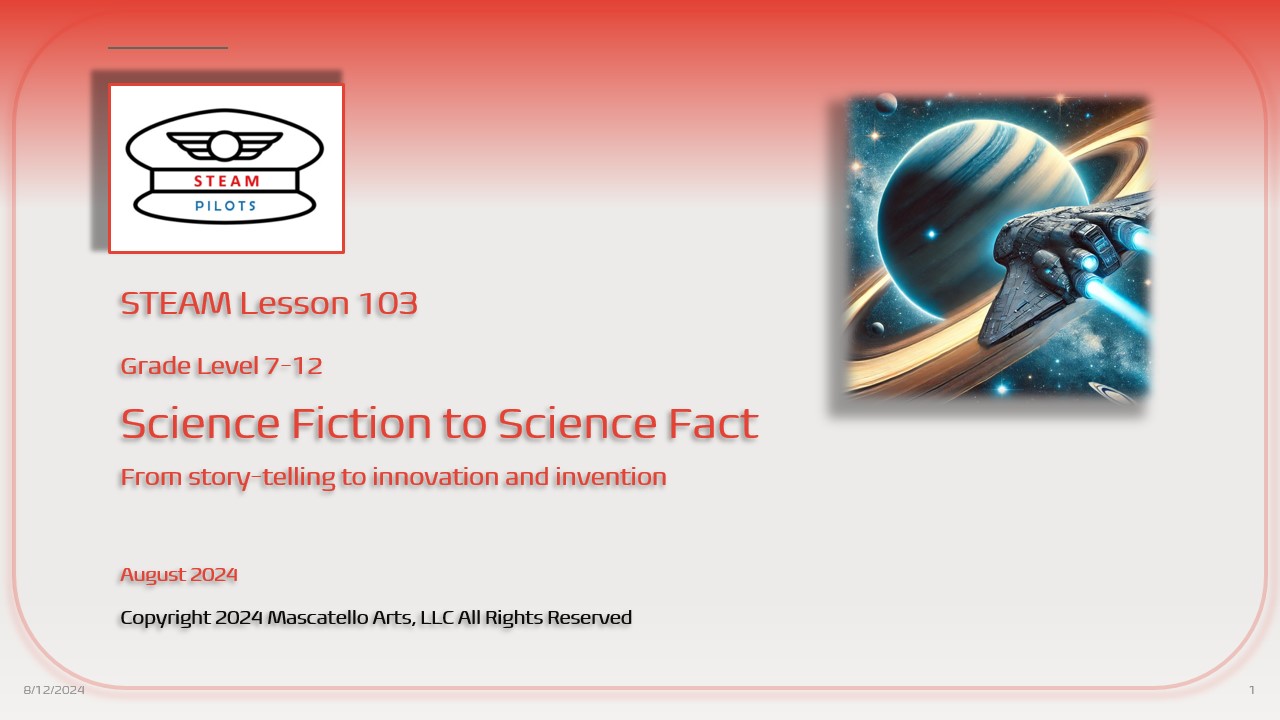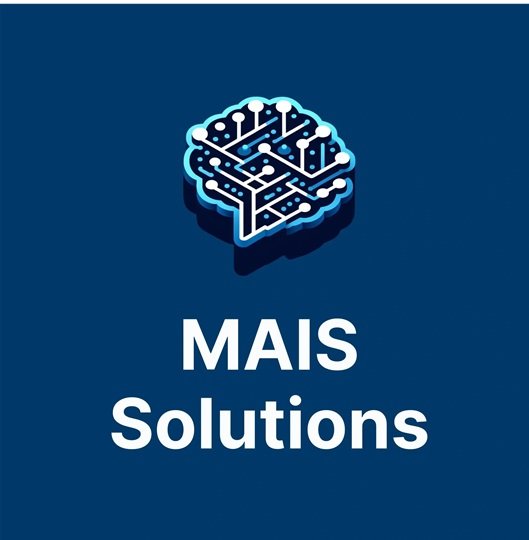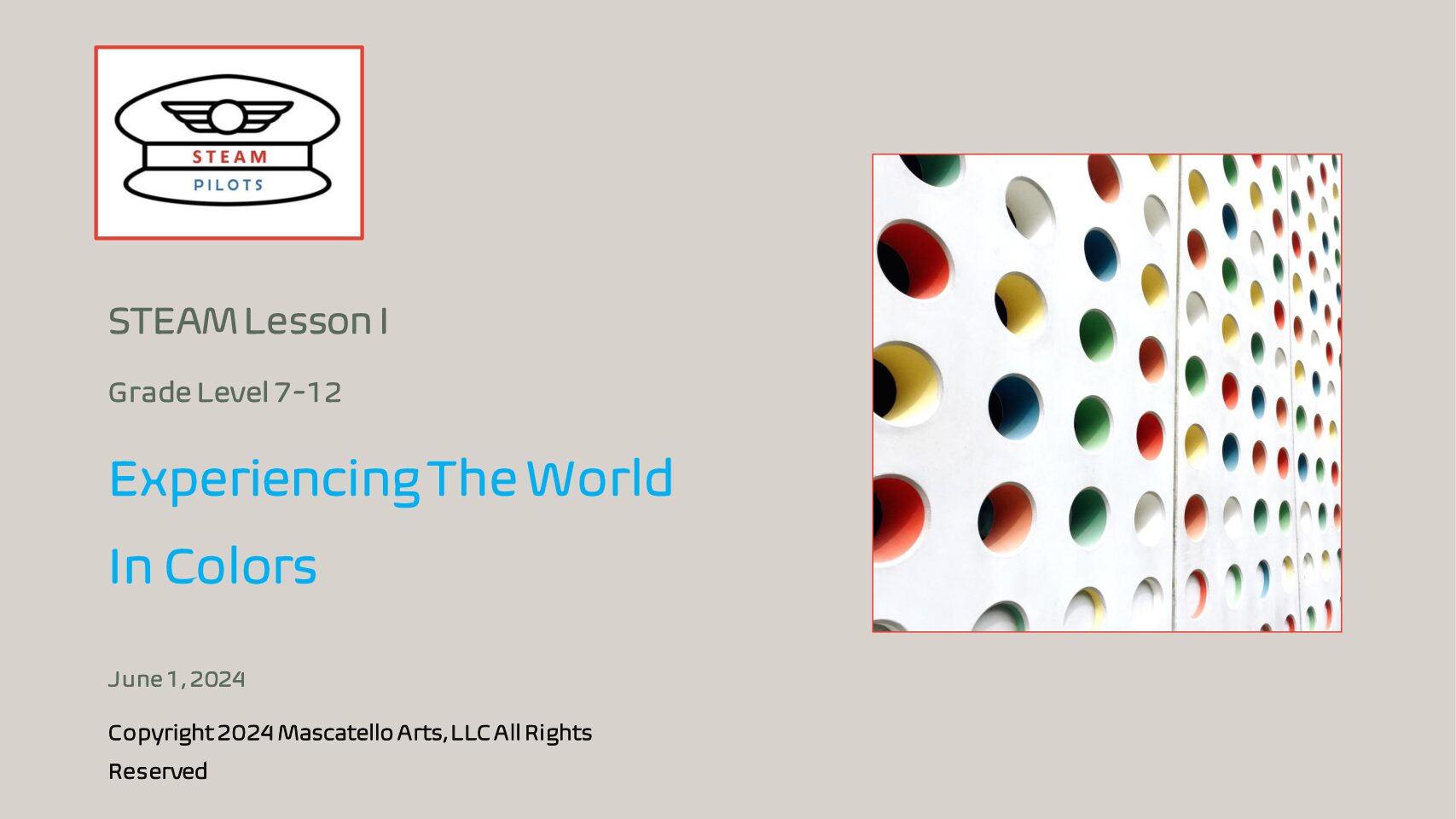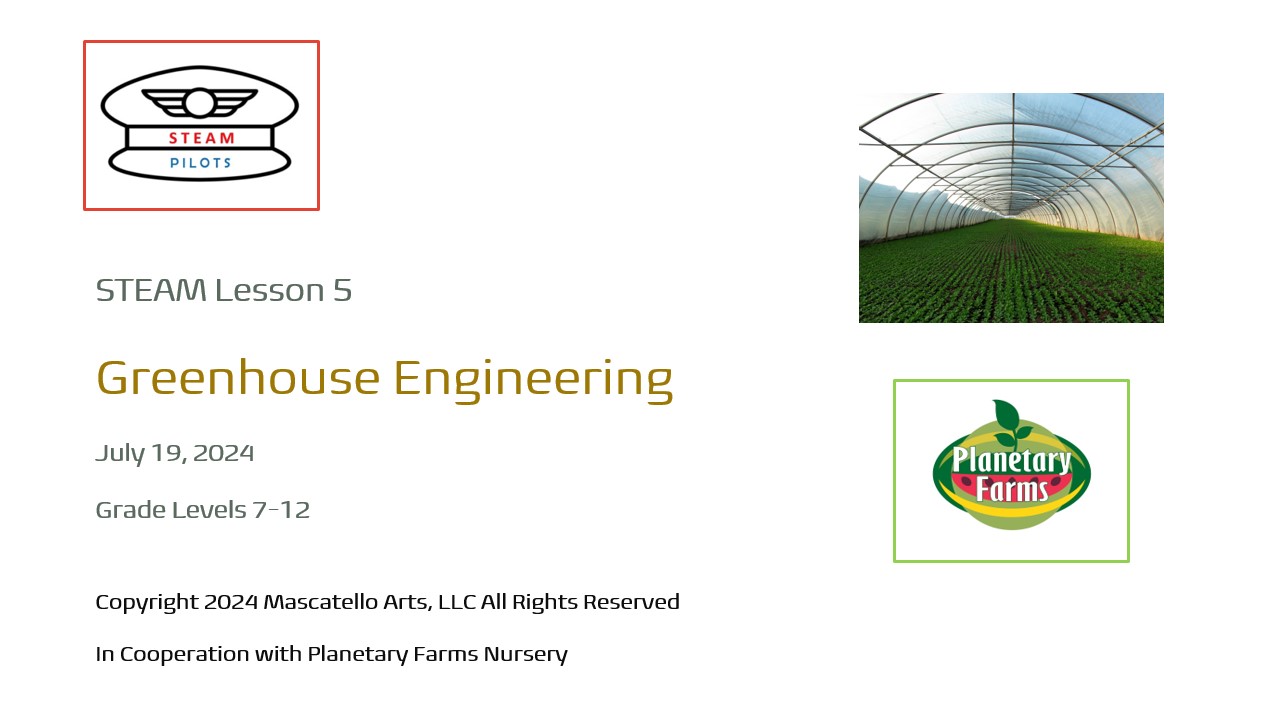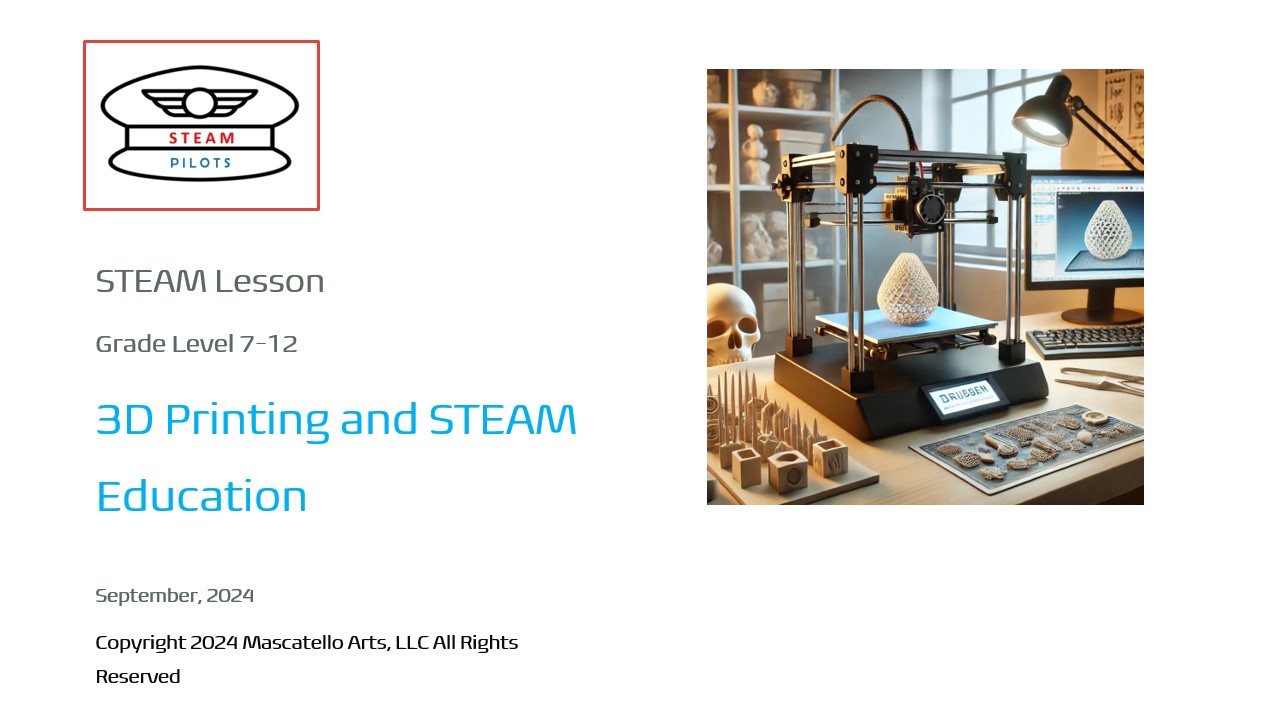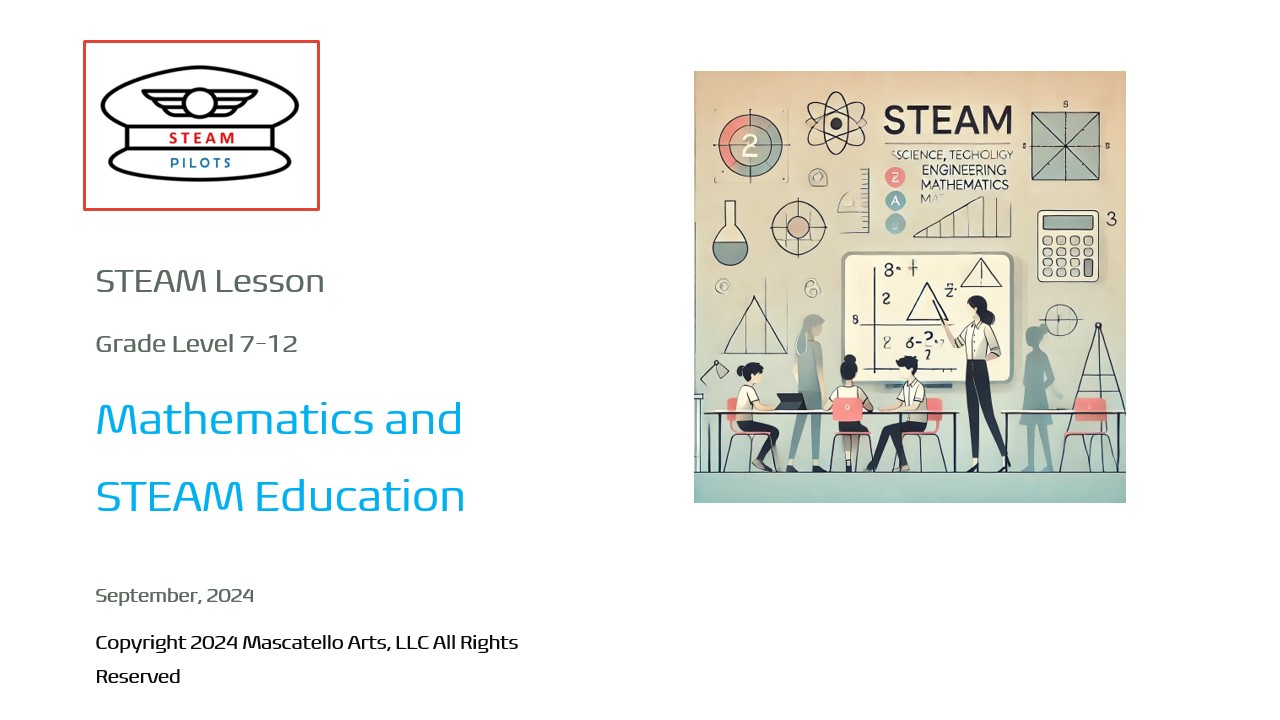Your cart is currently empty!
Science Fiction to Science Fact
Back to: Full STEAM Ahead
Introduction
Welcome to our exploration of the fascinating relationship between science fiction and real-life technological innovations. Imagine a world where robots walk among us, space travel is as common as a plane ride, and artificial intelligence seamlessly integrates into our daily lives. These concepts, once the stuff of dreams and wild imagination, are increasingly becoming a reality. But where did these ideas originate? How did we move from the pages of unbelievable stories to the tangible technologies that shape our world today?
In this lesson, we’ll explore the remarkable way science fiction has not only entertained us but also served as a powerful catalyst for innovation. Writers like Jules Verne, Isaac Asimov, and Arthur C. Clarke didn’t just create engaging stories; they envisioned future possibilities that have inspired scientists, engineers, and inventors to turn fiction into reality.
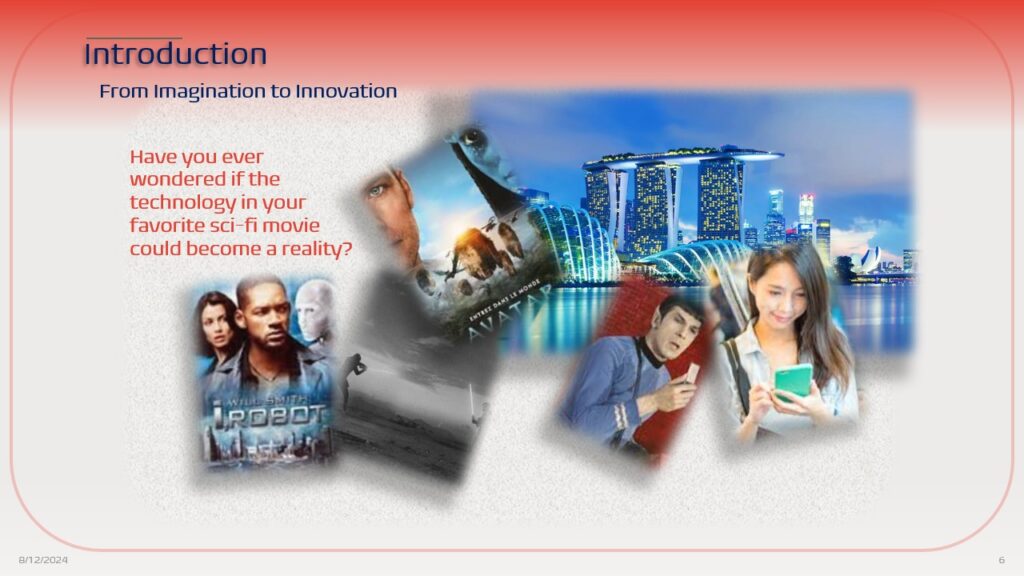
We’ll explore how iconic Science Fiction works predicted or inspired modern technologies, such as the flip phone, which drew inspiration from the communicator in Star Trek, or the idea of geostationary satellites, first conceptualized in 2001: A Space Odyssey. You’ll see how the imaginative worlds of Science Fiction have influenced the development of AI, space exploration, genetic engineering, robotics, and more.
As we journey through this lesson, consider how the boundary between fiction and reality is often blurred. The stories that once seemed far-fetched now serve as blueprints for the future, proving that imagination is a crucial component of innovation. By the end of this lesson, you’ll have a deeper understanding of how Science Fiction continues to shape our technological landscape and inspire the next generation of inventors and innovators
Can Science Fiction Inspire Innovation?
One prominent writer who has often discussed how science fiction inspires people to invent is Arthur C. Clarke. Clarke was not only a renowned Science Fiction author but also a futurist and inventor who strongly believed in the power of Science Fiction to stimulate innovation and technological progress.
Arthur C. Clarke: Science Fiction as a Catalyst for Innovation
Background:
- Born: December 16, 1917, in Minehead, England.
- Died: March 19, 2008, in Colombo, Sri Lanka.
- Clarke is best known for his science fiction works, including 2001: A Space Odyssey, Rendezvous with Rama, and Childhood’s End. His writing often explored the intersection of science, technology, and human destiny.
Belief in Science Fiction’s Influence:
- Clarke was a strong advocate for the idea that Science Fiction serves as a blueprint for future technological developments. He believed that by imagining future possibilities, Science Fiction could inspire scientists, engineers, and inventors to turn those ideas into reality.
- One of Clarke’s most famous quotes encapsulates this belief: “Any sufficiently advanced technology is indistinguishable from magic.” This statement reflects his understanding that today’s science fiction could become tomorrow’s reality, as once-fantastical ideas are realized through technological advancement.
Geostationary Satellites:
- Clarke’s most famous contribution to real-world technology was his proposal of geostationary satellites for telecommunications. In a 1945 article titled “Extra-Terrestrial Relays,” Clarke described a concept where satellites in geostationary orbit could be used for global communications. This idea, which seemed futuristic then, laid the groundwork for the modern communications satellite industry. Although he didn’t invent the first satellite, his concept significantly influenced the development of satellite technology.
Science Fiction as a Motivation for Scientists:
- Clarke frequently discussed how his work and the work of other science fiction writers inspired those working in scientific fields. He believed science fiction could motivate people to pursue careers in science and engineering by capturing their imagination and presenting a vision of the future they could help create.
- His works often predicted or inspired technological advancements like space travel, artificial intelligence, and the internet. Clarke saw science fiction as a way to explore the potential impacts of technology on society, pushing the boundaries of what was thought to be possible.
Influence on Popular Culture and Technology:
- Clarke’s influence extended beyond literature; his ideas and predictions have become embedded in popular culture and the scientific community. For example, his concept of a space elevator, described in his novel The Fountains of Paradise, continues to inspire research in space transportation.
Clarke’s Legacy:
- Arthur C. Clarke’s legacy as a science fiction writer and futurist is a testament to his belief in the power of imagination. His work inspires scientists, engineers, and inventors to explore new possibilities and push the limits of human achievement. Clarke’s vision of the future, grounded in scientific plausibility, remains a guiding light for those who seek to turn fiction into reality.
In summary, Arthur C. Clarke is a quintessential example of a writer who believed science fiction could inspire real-world inventions and technological progress. His work entertained and provided a roadmap for future innovations, showing that the boundary between fiction and reality is often just a matter of time and imagination.
Another giant of classic Science Fiction, Isaac Asimov, also believed in a technologically advanced society inspired by Sci-Fi.

“Today’s Science Fiction is tomorrow’s science fact” – Isaac Asimov
Isaac Asimov (1920–1992) was one of the most prolific and influential writers of the 20th century, best known for his works in science fiction and popular science. His contributions to literature, science, and education have left a lasting impact on the genre of science fiction and the general public’s understanding of science.
Early Life and Education:
- Birth: Isaac Asimov was born on January 2, 1920, in Petrovichi, Russia. When he was three years old, his family immigrated to the United States, settling in Brooklyn, New York.
- Education: Asimov was a brilliant student, skipping several grades and eventually attending Columbia University. He earned a Bachelor of Science degree in chemistry in 1939, a Master’s degree in chemistry in 1941, and a Ph.D. in biochemistry in 1948.
Career in Science and Writing:
- Academic Career: After earning his Ph.D., Asimov joined the faculty of Boston University School of Medicine, where he taught biochemistry. However, his passion for writing soon eclipsed his academic career.
- Writing Career: Asimov began writing science fiction at a young age, with his first story, “Marooned off Vesta,” published in 1939. He became a full-time writer in 1958, focusing on fiction and non-fiction.
Science Fiction Contributions:
- Foundation Series: Asimov is perhaps best known for his Foundation series, which began with the novel Foundation (1951). The series explores the fall and rise of a galactic empire and the efforts of a group of scientists, led by Hari Seldon, to shorten the following period of chaos. The series is a cornerstone of science fiction literature, influencing countless authors and works in the genre.
- Robot Series: Asimov’s Robot series, which includes the famous short story collection I, Robot (1950), introduced the “Three Laws of Robotics,” a set of ethical guidelines for robots. These laws have become a foundational concept in artificial intelligence and robotics discourse.
- Galactic Empire Series: Asimov also wrote the Galactic Empire series, set in the same universe as the Foundation series. These books, such as Pebble in the Sky (1950), explore the vastness of space and the complexities of human civilization.
Non-Fiction and Popular Science:
- Popular Science Writing: Asimov was a prolific writer of popular science books, explaining complex scientific concepts in an accessible way. His works include The Intelligent Man’s Guide to Science (1960), Asimov’s New Guide to Science (1984), and The Universe (1966). He wrote on various topics, including chemistry, biology, astronomy, mathematics, and history.
- Asimov’s New Guide to Science: This book, one of his most famous non-fiction works, is a comprehensive overview of scientific knowledge aimed at general readers. It covers the history and development of various scientific fields, making science understandable and exciting to a broad audience.
Legacy and Impact:
- Awards and Honors: Asimov received numerous awards throughout his career, including the Hugo Award, Nebula Award, and Bram Stoker Award. In 1987, he was named a Grand Master of the Science Fiction Writers of America.
- Cultural Influence: Asimov’s work has profoundly influenced science fiction and popular culture. His ideas about robotics, artificial intelligence, and future societies continue to inspire writers, filmmakers, and scientists.
- Prolific Output: Asimov wrote or edited over 500 books and an estimated 90,000 letters and postcards. His works span nearly every major category of the Dewey Decimal System, showcasing his vast range of interests and knowledge.
- Posthumous Recognition: Asimov’s influence continues long after his death. His Foundation series was adapted into a television series, and his ideas about robotics and artificial intelligence remain relevant in contemporary discussions about technology.
Interesting Facts:
- Three Laws of Robotics: Asimov’s “Three Laws of Robotics” have been widely referenced in science fiction literature and discussions about artificial intelligence.
- Wordsmith: Asimov was known for his extensive vocabulary and his love for wordplay, often including puns and linguistic puzzles in his writing.
- Asteroid: The asteroid 5020 Asimov was named in his honor, recognizing his contributions to literature and science.
Isaac Asimov remains one of the most significant figures in Science Fiction and science communication, known for his ability to make complex ideas accessible and his visionary ideas about the future of humanity and technology.
Jules Verne – The “Father of Science Fiction”
Jules Verne, often called the “Father of Science Fiction,” is renowned for his imaginative and visionary novels that captivated readers and inspired real-world innovations. His works, filled with detailed descriptions of futuristic technologies, have influenced generations of scientists, inventors, and explorers. Here’s how Jules Verne inspired innovation:
1. Imaginative Technology in Verne’s Novels:
“Twenty Thousand Leagues Under the Sea” (1870):
- Inspiration for Submarines:
- In this novel, Verne introduces the Nautilus, a fully functional submarine powered by electricity that can travel deep under the sea. At the time, submarines were primitive and limited in capability, but Verne’s detailed and realistic portrayal of the Nautilus inspires future engineers.
- Simon Lake, one of the early pioneers of submarine technology, credited Verne’s Nautilus as a major inspiration for his work. Modern submarines’ advanced propulsion systems and ability to explore the deep ocean echo Verne’s vision.
“From the Earth to the Moon” (1865):
- Inspiration for Space Travel:
- In this novel, Verne describes a journey to the moon in a spacecraft launched from a giant cannon. While the launch method was not scientifically feasible, many aspects of his story, such as the idea of space travel, orbital mechanics, and the challenges of re-entry, were remarkably prescient.
- Verne’s depiction of a moon mission influenced the Apollo program a century later. The similarities between Verne’s description and the actual Apollo missions are striking. For instance, Verne’s spacecraft, Columbiad, was launched from Florida, similar to the Kennedy Space Center, and carried three astronauts, just like the Apollo missions.
“Paris in the Twentieth Century” (written in 1863, published in 1994):
- Predictions of Modern Technology:
- This lesser-known novel was astonishingly accurate in predicting many modern technologies, including glass skyscrapers, high-speed trains, automobiles, electric lighting, and even computers (“electric calculating machines”).
- Verne’s vision of a technologically advanced society anticipated many 20th-century developments, inspiring innovators who turned these ideas into reality.
2. Influence on Inventors and Scientists:
- Robert Goddard and Rocketry:
- Robert Goddard, the American physicist and inventor known as the father of modern rocketry, was heavily inspired by Verne’s From the Earth to the Moon. Goddard cited Verne as a significant influence on his work in developing liquid-fueled rockets, eventually leading to space exploration.
- H.G. Wells and Science Fiction:
- H.G. Wells, another giant of science fiction, was influenced by Verne’s work. Wells took Verne’s approach of blending scientific facts with imaginative storytelling and pushed it further, influencing the next generation of writers and scientists.
- Explorers and Innovators:
- Explorers like Captain Jacques-Yves Cousteau pioneered marine exploration and were inspired by Verne’s vivid descriptions of undersea adventures. Cousteau’s development of the Aqua-Lung, which made scuba diving possible, can be seen as a direct link to Verne’s Twenty Thousand Leagues Under the Sea.
3. Verne’s Legacy in Modern Innovation:
- Visionary Technologies:
- Verne’s imaginative foresight was not limited to specific technologies; he envisioned a world where human ingenuity would overcome the barriers of distance, space, and the natural world. His novels often explored the relationship between technology and society, asking questions about the ethical use of new inventions, a theme still relevant today.
- Inspiring the Space Age:
- Verne’s influence on the space age cannot be overstated. His ideas about space travel, articulated long before such travel was possible, laid the groundwork for the scientific community’s pursuit of space exploration.
- Cultural Impact:
- Jules Verne’s works have become cultural touchstones, inspiring countless films, television shows, and books. His optimistic view of science as a force for good continues to inspire innovators and dreamers worldwide.
Conclusion:
Jules Verne’s novels are more than just stories; they are blueprints for the future that inspired real-world innovations. His ability to envision the possibilities of science and technology sparked the imaginations of inventors and explorers, many of whom turned his fictional ideas into reality. From submarines to space travel, Verne’s influence can be seen in some of the most significant technological advancements of the modern era. His legacy as a visionary continues to inspire innovation and exploration, proving that imagination truly has the power to shape the world.
A History of Modern Sci-Fi Writing
| Time Period | Author | Work(s) |
|---|---|---|
| 1818 | Mary Shelley | Frankenstein |
| 1864-1873 | Jules Verne | Twenty Thousand Leagues Under the Sea Journey to the Center of the Earth |
| 1895-1898 | H.G. Wells | The Time Machine War of the Worlds The Invisible Man |
| 1950’s | Isaac Asimov | I, Robot and Foundation Series |
| 1968 | Arthur C. Clarke | 2001: A Space Odyssey (based on 1948 work entitled “The Sentinel” |
| 1959-1961 | Robert Heinlein | Stranger in a Strange Land Starship Troopers |
See the details…
The history of science fiction (sci-fi) books is a rich and varied one, tracing its roots back centuries and evolving significantly over time. Sci-fi as a genre explores speculative concepts often rooted in scientific principles, but it also delves into social, philosophical, and moral questions through imaginative storytelling. Here’s a broad overview of the development of sci-fi literature:
1. Early Roots (Before the 19th Century):
- Ancient and Classical Works:
- While not science fiction in the modern sense, early works like Plato’s “Republic” (circa 380 BCE) included utopian themes, which would become a hallmark of sci-fi.
- “True History” by Lucian of Samosata (2nd century CE) is often considered one of the earliest examples of science fiction, with its imaginative tales of space travel and extraterrestrial life.
- Medieval and Renaissance Fantasies:
- Works like “The Divine Comedy” (1320) by Dante Alighieri and Thomas More’s “Utopia” (1516) laid the groundwork for speculative fiction, though their focus was more on allegory and social criticism than science.
2. The Birth of Modern Science Fiction (19th Century):
- Frankenstein by Mary Shelley (1818):
- Often cited as the first true science fiction novel, “Frankenstein” introduced the theme of the “mad scientist” and explored the consequences of scientific overreach. Shelley’s work combined gothic horror with speculative science, establishing key themes that would recur throughout sci-fi.
- Jules Verne and H.G. Wells:
- Jules Verne is considered one of the fathers of science fiction. His novels like “Journey to the Center of the Earth” (1864), “Twenty Thousand Leagues Under the Sea” (1870), and “Around the World in Eighty Days” (1873) blended adventure with cutting-edge scientific ideas of the time.
- H.G. Wells followed in Verne’s footsteps with works like “The Time Machine” (1895), “The War of the Worlds” (1898), and “The Invisible Man” (1897). Wells introduced themes of time travel, alien invasion, and the ethical implications of science, which became central to the genre.
3. The Golden Age of Science Fiction (1930s-1950s):
- Pulp Magazines and Serialized Fiction:
- The early 20th century saw the rise of pulp magazines like “Amazing Stories” (founded by Hugo Gernsback in 1926), which popularized sci-fi and introduced readers to new ideas and emerging writers.
- Authors like Isaac Asimov, Arthur C. Clarke, and Robert Heinlein emerged during this period, often publishing serialized stories in these magazines before expanding them into full-length novels.
- Classic Works and Themes:
- Isaac Asimov’s “Foundation” series (beginning in 1942) and “Robot” series (starting with “I, Robot” in 1950) explored the future of humanity and artificial intelligence.
- Arthur C. Clarke’s “2001: A Space Odyssey” (1968) and “Childhood’s End” (1953) delved into space exploration and the evolution of human consciousness.
- Robert Heinlein‘s “Stranger in a Strange Land” (1961) and “Starship Troopers” (1959) examined social and political structures through the lens of speculative futures.
4. The New Wave and Postmodern Sci-Fi (1960s-1980s):
- New Wave Science Fiction:
- The 1960s and 1970s saw the rise of the New Wave movement, which brought a more experimental and literary approach to sci-fi. Authors like Philip K. Dick, Ursula K. Le Guin, and J.G. Ballard focused on psychological depth, social issues, and the inner landscapes of characters.
- Philip K. Dick’s works, such as “Do Androids Dream of Electric Sheep?” (1968), often dealt with altered states of reality and questioned the nature of humanity.
- Diverse Voices and Themes:
- Ursula K. Le Guin’s “The Left Hand of Darkness” (1969) and “The Dispossessed” (1974) explored gender, sexuality, and political systems in speculative worlds.
- Frank Herbert’s “Dune” (1965) became one of the most influential sci-fi novels of all time, blending environmentalism, politics, and religion in a richly detailed future society.
5. Cyberpunk and Beyond (1980s-1990s):
- Cyberpunk Genre:
- The 1980s saw the emergence of the cyberpunk genre, which focused on high-tech, dystopian futures. William Gibson’s “Neuromancer” (1984) is often credited with launching the genre, introducing concepts like cyberspace, artificial intelligence, and virtual reality.
- Bruce Sterling and Neal Stephenson also became prominent figures in this movement, with works like “The Difference Engine” (1990) and “Snow Crash” (1992), respectively.
- Darker, Edgier Themes:
- The cyberpunk genre reflected the anxieties of the digital age, with themes of corporate control, cybernetic enhancements, and the blurring of human and machine identities.
6. Contemporary Science Fiction (2000s-Present):
- Diverse and Global Voices:
- The 21st century has seen an explosion of diverse voices in sci-fi. Authors like N.K. Jemisin, Ken Liu, and Liu Cixin have brought new perspectives and themes to the genre.
- N.K. Jemisin made history by winning the Hugo Award for Best Novel three years in a row for her “Broken Earth” trilogy (2015-2017), which explores climate change, oppression, and survival.
- New Subgenres:
- Subgenres like biopunk, solarpunk, and cli-fi (climate fiction) have emerged, reflecting contemporary concerns about biotechnology, sustainable futures, and environmental issues.
- Liu Cixin’s “The Three-Body Problem” (2008, English translation in 2014) introduced Chinese sci-fi to a global audience, blending hard science with philosophical and existential questions.
- Continued Evolution:
- Sci-fi continues to evolve, with authors experimenting with form, content, and narrative structure, pushing the boundaries of what the genre can do. The genre now encompasses a wide range of styles and themes, from space operas to near-future dystopias, exploring both the possibilities and dangers of technological progress.
Conclusion:
The history of science fiction books is a journey through the evolving relationship between humanity and technology. From early speculative works to the sophisticated narratives of today, sci-fi has always been a genre that reflects and challenges our understanding of the world. As technology continues to advance, sci-fi will undoubtedly remain a vital and dynamic form of storytelling, inspiring future generations of readers, thinkers, and innovators.
A History of Sci-Fi in Film
Listen to the following Audio Clip
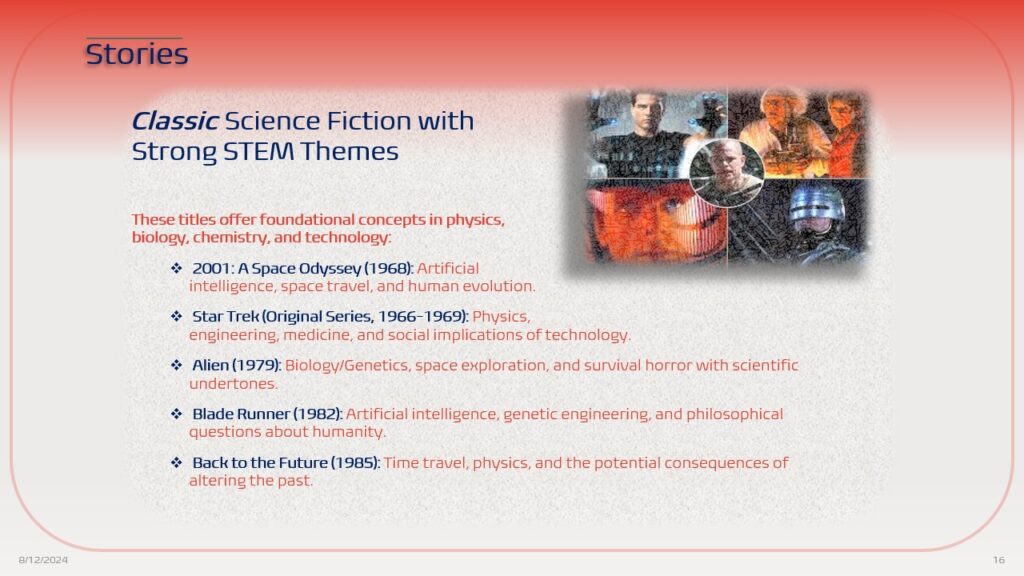
My Favorite Sci-Fi Films of All Time
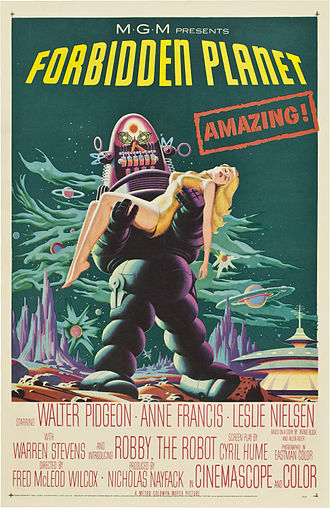
Number 1. Forbidden Planet is a 1956 film that pioneered several aspects of Science Fiction cinema. It was the first Sci-Fi film to depict humans traveling in a man-made faster-than-light starship and the first to be set entirely on a planet orbiting another star, far away from Earth and the Solar System.
The Robby the Robot character is one of the first film robots that was more than just a mechanical “tin can” on legs; Robby displays a distinct personality and is an integral supporting character. The film was groundbreaking as the first of any genre to use an entirely electronic musical score courtesy of Bebe and Louis Barron.
Note: Adapted from the article ‘Forbidden Planet‘ on Wikipedia, available under the Creative Commons Attribution-ShareAlike 3.0 Unported License (CC BY-SA 3.0).”
“Forbidden Planet” and Shakespeare’s “The Tempest”
“Forbidden Planet” is a 1956 science fiction film that draws heavily from William.
Shakespeare’s play “The Tempest.” In “The Tempest,” the story revolves around Prospero, a powerful magician who rules over a remote island, and the various characters who end up on the island due to a shipwreck. The play explores themes of power, control,
and the interplay between civilization and nature.
In “Forbidden Planet,” the story is set in the distant future, where a space expedition visits a
distant planet,-Altair IV, inhabited by Dr. Morbius and his daughter, Altaira. Dr. Morbius represents the Prospero figure, using advanced technology (akin to magic in the original play) to control the environment and protect his domain. The film explores similar themes of power, the dangers of unchecked knowledge, and the consequences of human hubris.
The connection between the two works lies in their exploration of similar themes and
narrative arcs, with “Forbidden Planet” as a work of Science Fiction reimagining the classic Shakespearean tale. The character parallels, such as Morbius to Prospero and Altaira to Miranda, further reinforce the connection between the two works.

Inspiration

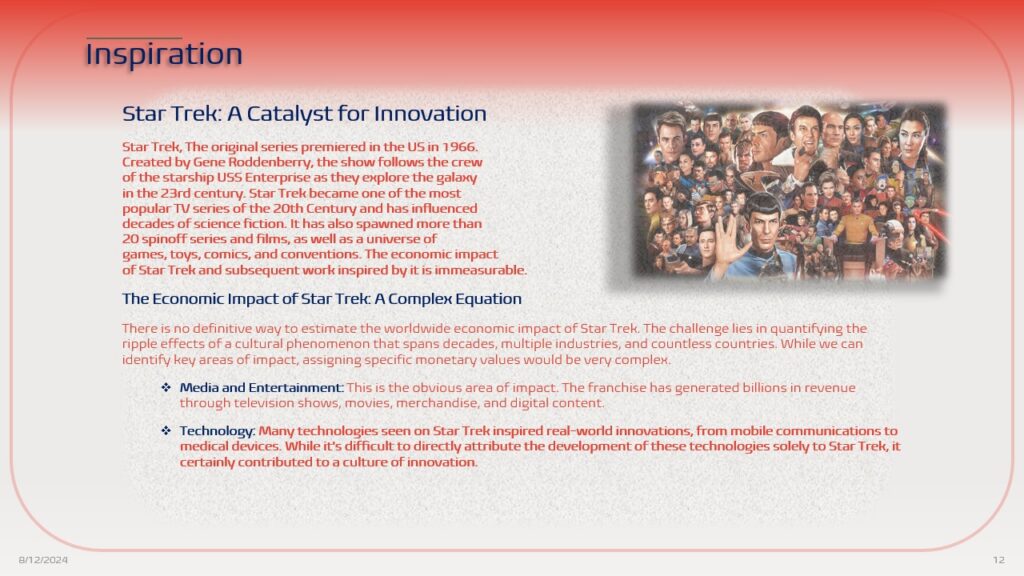
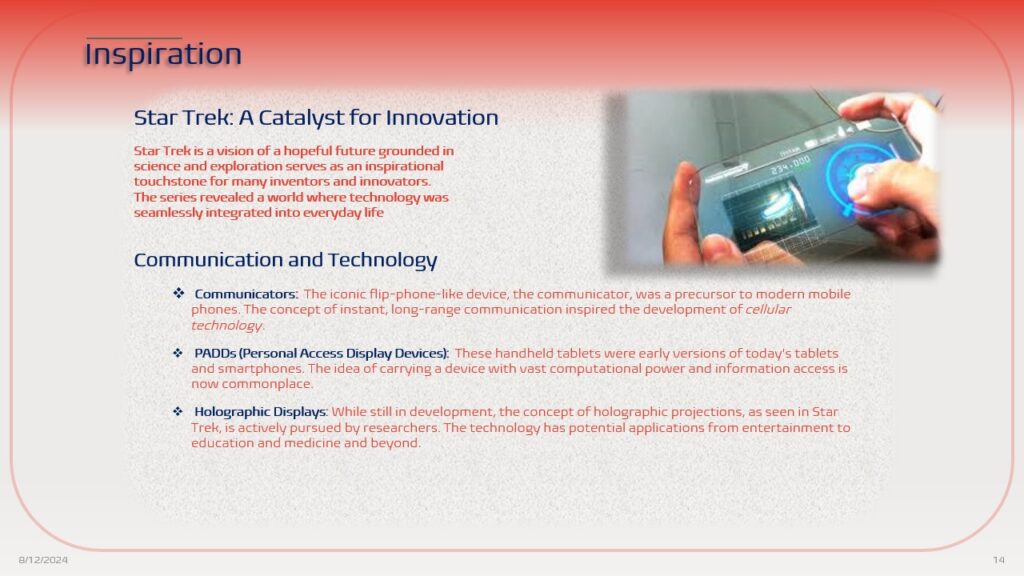
More about Star Trek
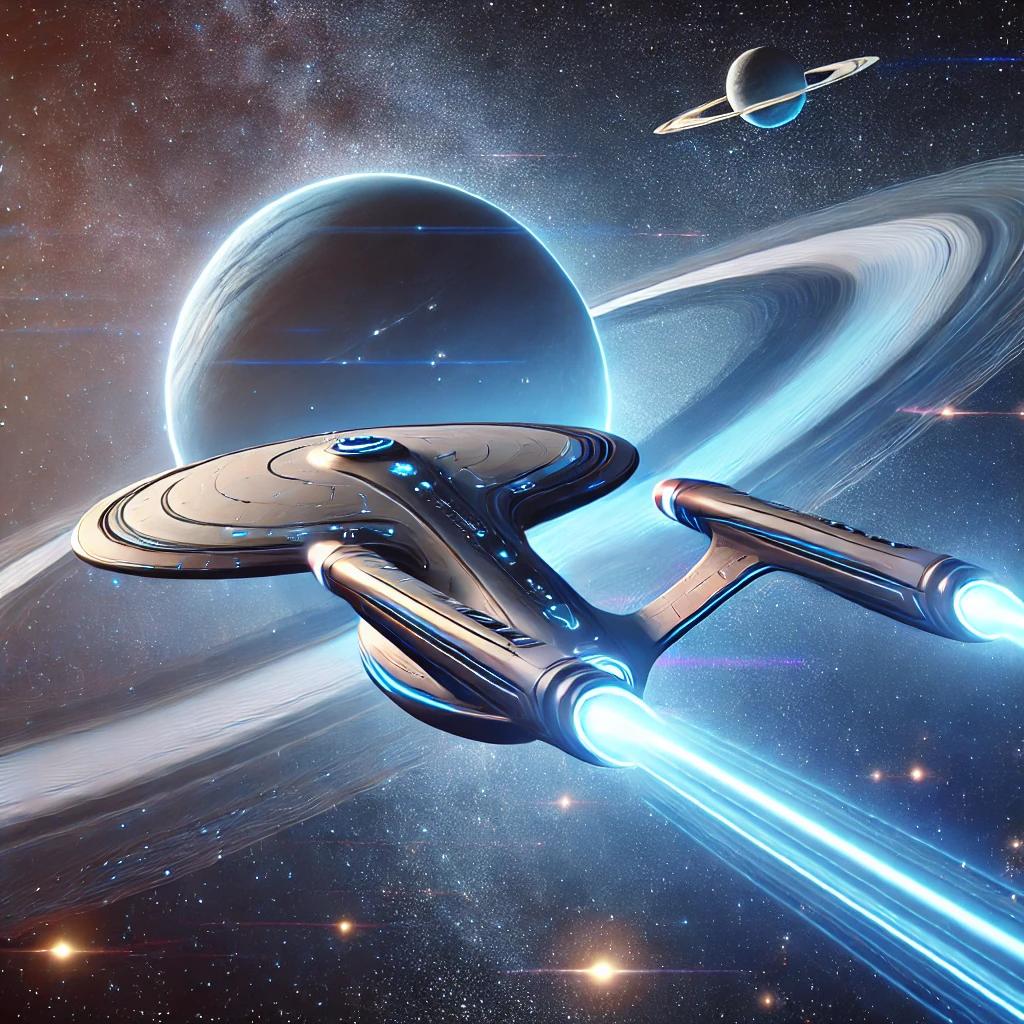
Here are some interesting facts about Star Trek:
1. Creation and Debut:
- Creator: Star Trek was created by Gene Roddenberry, a former police officer and pilot, who envisioned the series to explore social and political issues through science fiction.
- Original Series Premiere: The original Star Trek series (often referred to as “The Original Series” or TOS) first aired on September 8, 1966, on NBC.
2. Cultural Impact:
- Diversity and Inclusion: Star Trek was groundbreaking, featuring a diverse cast with characters of different races, nationalities, and genders working together. Notably, Lieutenant Uhura, played by Nichelle Nichols, was among the first African American women to play a major television role.
- First Interracial Kiss: The show made television history in 1968 with the first scripted interracial kiss on American television between Captain Kirk (William Shatner) and Lieutenant Uhura (Nichelle Nichols).
3. Influence on Technology:
- NASA and Star Trek: Star Trek’s influence extended to NASA, with some of its astronauts, like Mae Jemison, citing the show as an inspiration. Jemison even appeared as a guest star in an episode of Star Trek: The Next Generation.
4. Spin-offs and Continuations:
- Numerous Series: Star Trek has spawned numerous spin-offs, including Star Trek: The Next Generation (1987-1994), Star Trek: Deep Space Nine (1993-1999), Star Trek: Voyager (1995-2001), and Star Trek: Enterprise (2001-2005).
- Recent Shows: The franchise continues with new series like Star Trek: Discovery (2017-present), Star Trek: Picard (2020-present), and Star Trek: Strange New Worlds (2022-present).
5. Movies:
- Film Franchise: The Star Trek film franchise began in 1979 with Star Trek: The Motion Picture. There have been 13 Star Trek films, with the latest, Star Trek Beyond, released in 2016.
- Reboot: The franchise was rebooted in 2009 with J.J. Abrams’ Star Trek, introducing an alternate timeline known as the “Kelvin Timeline.”
6. The Prime Directive:
- Guiding Principle: One of the critical concepts in Star Trek is the Prime Directive, a principle of non-interference in the natural development of alien civilizations, reflecting themes of ethical conduct and responsibility.
7. Memorable Characters:
- Iconic Roles: Some of the most iconic characters include Captain James T. Kirk (William Shatner), Mr. Spock (Leonard Nimoy), Dr. Leonard “Bones” McCoy (DeForest Kelley), Captain Jean-Luc Picard (Patrick Stewart), and Commander Data (Brent Spiner).
- Mr. Spock’s Logic: Spock, the half-human, half-Vulcan science officer, is famous for his logical approach and the Vulcan salute, accompanied by the phrase “Live long and prosper.”
8. Fandom and Legacy:
- Fandom: Star Trek has one of the most dedicated fanbases in history, often referred to as “Trekkies” or “Trekkers.” The fandom is known for organizing conventions, producing fan fiction, and influencing the series’ continuation through grassroots campaigns.
- Enduring Legacy: Over five decades since its debut, Star Trek remains a cultural phenomenon, influencing generations of fans, creators, and scientists. Its themes of exploration, diversity, and optimism continue to resonate.
9. Roddenberry’s Vision:
- Utopian Future: Gene Roddenberry envisioned Star Trek as a depiction of a future where humanity had overcome its divisions, focusing on exploration, peace, and understanding. This optimistic outlook set Star Trek apart from many other science fiction works.
10. Starship Enterprise:
- Iconic Ship: The USS Enterprise, with its distinct saucer-shaped hull and twin nacelles, is one of the most recognizable starships in science fiction. Multiple versions of the Enterprise have been featured across the various Star Trek series and movies.
These facts highlight Star Trek’s significant impact on culture, technology, and the entertainment industry, making it one of the most influential and enduring franchises in science fiction history.
More Fan Favorites That Have Inspired Creative Thinking and Inventiveness
Star Wars
Star Wars has inspired a wide array of real-world inventions and technological advancements, spanning multiple fields from robotics to space exploration. Some of the most notable examples include:
- Lightsabers:
- While real lightsabers as depicted in Star Wars remain within the realm of science fiction, there have been attempts to create devices that mimic their iconic appearance and function. For example, a company called Wicked Lasers created the LaserSaber, which uses a high-powered laser beam combined with a polycarbonate tube to create a lightsaber-like effect. Additionally, inventors and engineers have experimented with plasma-based technologies, though creating a fully functional lightsaber remains a distant dream.
- Robotics (Droids):
- Star Wars inspired the development of advanced robotics, particularly humanoid robots and autonomous machines. BB-8, the rolling droid from The Force Awakens, led to the creation of a real-life, app-controlled BB-8 toy by Sphero. Additionally, the development of humanoid robots like ASIMO by Honda and Atlas by Boston Dynamics draws inspiration from the droids of Star Wars, such as C-3PO and R2-D2.
- Holographic Communication:
- The holographic communication seen in Star Wars, where characters like Princess Leia send 3D messages, inspired advances in holography. Companies like Voxon Photonics and Leia Inc. are developing 3D display technologies that create the illusion of holographic images. While still in the early stages, these technologies are steadily advancing toward more immersive and interactive holographic communications.
- Autonomous Drones:
- The concept of droid starfighters and autonomous vehicles in Star Wars has influenced the development of autonomous drones. Military and civilian drones today use AI to navigate, perform tasks, and even engage in complex maneuvers, echoing the functionality of droid-controlled ships in the Star Wars universe.
- Space Travel and Exploration:
- Star Wars has been a significant cultural inspiration for space exploration efforts. The depiction of diverse planets and advanced space travel technology has motivated generations of engineers and scientists. The X Prize Foundation, which offers prizes for space-related innovations, was partly inspired by the vision of space exploration popularized by Star Wars. Additionally, companies like SpaceX have openly acknowledged the influence of Star Wars on their missions and the broader goals of making space travel more accessible.
- Prosthetics (Bionic Limbs):
- The concept of Luke Skywalker’s bionic hand in The Empire Strikes Back has inspired advancements in prosthetics. Modern bionic limbs, such as the LUKE Arm developed by DEKA Research, offer amputees highly functional prosthetic devices with capabilities that mimic natural limb movements, driven by the wearer’s nerve impulses.
These examples show how Star Wars has not only captured the imagination of millions but also spurred technological advancements that bring us closer to some of the futuristic concepts presented in the films.
Jurassic Park
Jurassic Park has significantly influenced both the scientific community and technology, particularly in genetics, paleontology, and entertainment. Here are some real-world inventions and developments inspired by the film:
- Genetic Engineering and De-extinction:
- Jurassic Park popularized the idea of using genetic engineering to bring extinct species back to life. This concept inspired real-world scientific projects focused on de-extinction. For example, the Woolly Mammoth Revival project, led by scientists like George Church at Harvard, aims to bring back mammoth-like creatures using advanced gene-editing techniques such as CRISPR. While reviving dinosaurs remains fictional, efforts to resurrect species like the woolly mammoth and the passenger pigeon are ongoing.
- DNA Analysis and Cloning:
- The film highlighted the potential of DNA analysis in cloning, leading to increased public interest in these technologies. Since then, advancements in DNA sequencing and cloning have progressed rapidly. For example, in 1996, the world saw the first cloned mammal, Dolly the sheep, a breakthrough that was partly fueled by the imagination sparked by Jurassic Park.
- Robotics and Animatronics:
- The lifelike animatronic dinosaurs created for Jurassic Park revolutionized the use of robotics in filmmaking and theme parks. The animatronics used in the film, particularly those developed by Stan Winston Studio, set new standards for realism and interactivity. This technology has since been used in various industries, including entertainment and education, where robotic dinosaurs are featured in exhibits and attractions.
- Paleontology and Fossil Study:
- Jurassic Park sparked a renewed public interest in paleontology, leading to increased funding and support for fossil studies. The portrayal of dinosaurs as dynamic, active creatures rather than slow-moving reptiles led to a shift in how paleontologists and the public perceive these ancient animals. The film’s influence contributed to new discoveries and a greater emphasis on understanding dinosaur behavior, physiology, and ecosystems.
- Dino-chicken and Genetic Experiments:
- Inspired by the idea of reverse-engineering dinosaurs from their modern descendants (birds), scientists like Jack Horner, who consulted on Jurassic Park, have explored creating a “dino-chicken.” This project aims to manipulate chicken embryos to express ancestral traits, such as teeth or elongated tails, potentially shedding light on dinosaur development and evolution.
- Virtual Reality (VR) and Theme Parks:
- The immersive world of Jurassic Park inspired the creation of VR experiences and theme park attractions that allow visitors to “experience” dinosaurs in a controlled environment. Companies have developed VR simulations and rides based on Jurassic Park, providing interactive and educational experiences that bring people closer to the prehistoric world.
Jurassic Park has had a lasting impact on both the scientific community and popular culture, driving innovations that range from genetic research to advancements in robotics and virtual reality. The film’s legacy continues to influence how we think about science, technology, and the possibilities of bringing extinct species back to life.
The Matrix
Virtual Reality – “The Metaverse”
Virtual Reality – “The Metaverse”
Inception
The movie Inception (2010) inspired the creation of a real-world invention called the Dormio device, developed by MIT Media Lab researchers. Dormio is a wearable device designed to influence and explore the hypnagogic state—the transitional state between wakefulness and sleep—similar to how the characters in Inception manipulate dreams.
Dormio tracks a user’s physiological signals (like muscle tone and heart rate) to detect when they are entering the hypnagogic state. It then uses auditory cues to influence the content of the user’s thoughts and dreams during this state. The goal is to explore how dream content can be shaped, which echoes the concept of shared dream manipulation depicted in Inception.
This invention showcases how Inception not only influenced popular culture but also inspired scientific and technological exploration into the nature of dreams and consciousness.
The Avenger Series
Iron Man (2008) inspired several real-world inventions and technological advancements, particularly in the fields of wearable technology, robotics, and augmented reality. Some notable examples include:
- Exoskeletons:
- The Iron Man suit inspired the development of advanced exoskeletons designed to enhance human strength and endurance. Companies like Lockheed Martin and Raytheon have developed military-grade exoskeletons, such as the HULC (Human Universal Load Carrier), which assist soldiers in carrying heavy loads.
- The XOS exoskeleton by Sarcos Robotics is another example, designed for industrial and military applications to enhance physical capabilities.
- Augmented Reality (AR) Interfaces:
- Tony Stark’s Heads-Up Display (HUD) within the Iron Man helmet inspired the development of AR interfaces. Technologies like Microsoft HoloLens and Google Glass incorporate similar concepts, providing users with real-time data overlays in their field of vision, much like Stark’s in-suit interface.
- 3D Holographic Displays:
- The holographic interface Tony Stark uses to design his suit influenced the development of 3D holographic displays. While true 3D holograms are still in their infancy, companies like Looking Glass Factory and Voxon Photonics are pushing the boundaries of holographic technology, creating displays that allow users to interact with digital objects in a 3D space.
- Artificial Intelligence (AI) Assistants:
- Stark’s AI assistant, J.A.R.V.I.S., inspired the creation of advanced AI-driven personal assistants. While commercial AIs like Siri, Alexa, and Google Assistant are not as advanced as J.A.R.V.I.S., they represent the early stages of AI personal assistants capable of managing tasks, controlling smart homes, and providing contextual information.
These inventions demonstrate how Iron Man influenced a range of technological innovations, bridging the gap between science fiction and reality
The Terminator
The Terminator series, with its depiction of advanced artificial intelligence (AI) and robotics, has inspired numerous real-world inventions, technological advancements, and ethical discussions, particularly in the fields of AI, robotics, and defense. Here are some key influences:
- Autonomous Weapons and Military Robotics:
- The concept of autonomous, intelligent machines used in warfare, as depicted by the Terminators and Skynet in the series, has inspired the development of real-world military robots and drones. While we’re far from creating Terminator-like machines, autonomous weapons such as unmanned aerial vehicles (UAVs) and autonomous ground robots are already in use by militaries worldwide. These systems can operate with varying degrees of autonomy, raising concerns about the ethics of AI-controlled weapons, much like the ethical dilemmas presented in The Terminator.
- Artificial Intelligence (AI):
- The idea of a self-aware AI, as represented by Skynet, has fueled discussions and research into AI development and its potential risks. While today’s AI technologies, such as machine learning and neural networks, are far more controlled and less autonomous than Skynet, the series has sparked ongoing debates about the potential for AI to become uncontrollable or to surpass human intelligence. These discussions have led to the creation of initiatives like AI ethics boards and research into AI safety, aimed at preventing the rise of dangerous AI.
- Humanoid Robots:
- The lifelike appearance and advanced capabilities of the Terminator models (e.g., the T-800) have inspired the development of humanoid robots that mimic human appearance and behavior. Companies like Boston Dynamics and Honda have developed robots such as Atlas and ASIMO, which can walk, run, and perform complex tasks. While these robots are far from being Terminators, the series has undoubtedly influenced the push towards creating more human-like robots for use in various industries, including healthcare, manufacturing, and disaster response.
- Cybernetic Implants and Prosthetics:
- The idea of a cyborg—a being that combines organic and mechanical parts—has inspired advancements in cybernetic implants and prosthetics. Modern bionic limbs, such as the LUKE Arm and Ossur’s bionic leg, are equipped with advanced sensors and actuators that allow users to control them with their thoughts, much like the human-cyborg hybrids in The Terminator. These technologies aim to restore mobility and functionality to amputees, pushing the boundaries of human-machine integration.
- AI Personal Assistants and Voice Recognition:
- The portrayal of intelligent systems capable of natural language processing and voice interaction, like Skynet, has influenced the development of AI-driven personal assistants. Devices like Siri, Alexa, and Google Assistant use advanced voice recognition and natural language processing to interact with users, drawing inspiration from the idea of conversational AI. While these assistants are benign, the concept of AI that can understand and respond to humans as portrayed in The Terminator has become a reality in a more controlled and beneficial form.
- Ethical Discussions on AI and Robotics:
- The Terminator series has prompted widespread ethical discussions on the implications of AI and robotics in society. The potential for AI to become uncontrollable or for robots to be used in harmful ways has led to the formation of groups like The Future of Life Institute and the development of guidelines for responsible AI development. These discussions are crucial in ensuring that as we advance in AI and robotics, we do so in a way that prioritizes safety and ethics.
- Surveillance and Privacy Concerns:
- The omnipresence of Skynet and its ability to monitor and control global systems have drawn attention to the issues of surveillance and privacy in the digital age. As governments and corporations deploy more sophisticated surveillance technologies, concerns about privacy, data security, and the potential misuse of these technologies echo the warnings presented in The Terminator.
The Terminator has had a profound impact on both technology and society, influencing everything from military robotics to ethical discussions on AI. The series serves as both a source of inspiration and a cautionary tale as we continue to explore and develop advanced technologies.
Arrival
Arrival (2016), a science fiction film directed by Denis Villeneuve, has had a significant impact on both scientific thought and popular culture, particularly in the areas of linguistics, communication, and the exploration of alien life. The film’s unique approach to depicting first contact with an alien species has inspired several real-world innovations, research, and discussions. Here are some notable influences:
- Linguistics and Communication:
- The film’s central theme revolves around understanding and deciphering an alien language, which has inspired renewed interest in the field of linguistics. The concept of how language shapes thought, known as the Sapir-Whorf hypothesis, is explored in the movie, leading to increased discussions and studies on how different languages influence perception and cognition. Researchers have been motivated to explore the implications of non-linear language and how it could affect human cognition if it existed.
- Non-Linear Communication and Time Perception:
- Arrival presents the idea of a language that is non-linear, where the past, present, and future are perceived simultaneously. This concept has sparked interest in how non-linear communication might be possible and its implications for understanding time and consciousness. Philosophers and scientists have discussed the film’s portrayal of time as a non-linear experience, leading to deeper explorations of temporal cognition and its potential effects on human understanding.
- Interstellar Communication:
- The film has inspired scientists and researchers to think more deeply about how humanity might communicate with extraterrestrial life if such an encounter were to occur. Projects like METI (Messaging Extraterrestrial Intelligence) and SETI (Search for Extraterrestrial Intelligence) have been influenced by the challenges depicted in the film regarding the need for a universal language or method of communication that could be understood by entirely different species.
- Artificial Intelligence and Language Processing:
- The film’s exploration of deciphering an alien language has parallels with the challenges faced in natural language processing (NLP) and machine learning. Researchers in AI have drawn inspiration from the film in their efforts to develop more advanced algorithms for translating and understanding human languages, especially those with complex or non-standard structures. The idea of building AI systems capable of understanding and generating new forms of communication has gained traction in the AI community.
- Philosophy of Time and Free Will:
- The philosophical implications of Arrival, particularly its exploration of determinism and free will, have led to discussions in both academic and popular circles. The film suggests that knowing the future might not change one’s actions, a concept that has intrigued philosophers and ethicists, leading to renewed debates about predestination, free will, and the nature of time.
- Xenolinguistics:
- While xenolinguistics (the study of hypothetical alien languages) was already a topic of interest in science fiction, Arrival brought it to mainstream attention. The film’s realistic and thoughtful depiction of the process of learning an alien language has inspired researchers and science fiction writers to consider more seriously the complexities and challenges involved in communicating with extraterrestrial beings.
- Cultural and Diplomatic Studies:
- The film’s depiction of how different nations react to the arrival of extraterrestrial life has influenced discussions on international diplomacy and cultural communication. It has led to explorations of how different cultures and governments might approach a first-contact scenario, emphasizing the importance of collaboration and understanding across cultural boundaries.
Arrival has had a profound impact on how we think about language, communication, and the potential for contact with extraterrestrial life. Its influence extends beyond the realms of science fiction, prompting real-world discussions and innovations in linguistics, AI, and philosophy. The film’s thoughtful approach to these topics continues to inspire researchers, scientists, and thinkers in various fields.
Contact
Contact (1997), directed by Robert Zemeckis and based on Carl Sagan’s novel, has had a significant impact on science, technology, and the broader cultural conversation about extraterrestrial life and communication. The film’s realistic portrayal of the search for extraterrestrial intelligence (SETI) and its themes of science, faith, and the human desire to explore the unknown have inspired a range of real-world innovations and discussions. Here are some key influences:
- SETI and the Search for Extraterrestrial Life:
- Contact brought the real-world work of the SETI (Search for Extraterrestrial Intelligence) Institute into the public eye, raising awareness and support for the scientific search for signals from alien civilizations. The film’s depiction of radio telescopes and the process of scanning the cosmos for signals inspired renewed interest in SETI, encouraging funding and participation in these efforts. It also helped to legitimize SETI as a serious scientific endeavor, rather than just a fringe pursuit.
- Radio Astronomy and the Use of Telescopes:
- The film prominently features the Arecibo Observatory and the Very Large Array (VLA), showcasing the importance of radio astronomy in searching for extraterrestrial signals. This exposure led to increased public interest in radio astronomy and inspired future astronomers and scientists. The depiction of using vast networks of telescopes to scan the skies for signals has reinforced the importance of collaborative, global scientific efforts in astronomy.
- Philosophical and Ethical Discussions:
- Contact delves into deep philosophical questions about the nature of belief, the intersection of science and religion, and the ethics of making contact with extraterrestrial life. The film’s exploration of these themes has inspired discussions in both academic and popular circles about the implications of discovering alien life, how humanity might respond, and the potential moral and ethical considerations involved.
- Public Engagement with Science:
- Carl Sagan, the author of the novel Contact, was known for his efforts to popularize science, and the film continued this legacy by making complex scientific ideas accessible to a wide audience. The film inspired many viewers to take an interest in astronomy, cosmology, and the scientific method. It also underscored the importance of scientific skepticism and inquiry, encouraging a more science-literate public.
- Global Cooperation in Space Exploration:
- The film emphasizes the need for international cooperation in space exploration and the search for extraterrestrial life. This theme has resonated with organizations like NASA, the European Space Agency (ESA), and others, reinforcing the idea that discovering alien life would be a global endeavor requiring collaboration across borders. The depiction of scientists from different nations working together has been a model for real-world scientific collaborations.
- Inspiration for Scientists and Engineers:
- Many scientists and engineers have cited Contact as an inspiration for their careers. The film’s portrayal of Dr. Ellie Arroway, a passionate and dedicated scientist, has especially inspired women to pursue careers in STEM (Science, Technology, Engineering, and Mathematics) fields. The character’s determination and commitment to scientific discovery resonate with those who see themselves as explorers of the unknown.
- Technological Advancements in Signal Processing:
- The film’s focus on detecting and interpreting complex signals from space has inspired advancements in signal processing technologies. While the technology depicted in Contact was based on existing methods, the film highlighted the challenges and potential of decoding extraterrestrial messages, leading to ongoing research and innovation in how we process and analyze data from space.
- SETI@home and Citizen Science:
- Although Contact did not directly inspire SETI@home, the public interest in SETI generated by the film contributed to the popularity of this distributed computing project. SETI@home allows volunteers to contribute computing power to analyze radio signals from space, embodying the spirit of global participation in the search for extraterrestrial life that Contact championed.
Contact has had a lasting influence on how we think about the search for extraterrestrial intelligence, the role of science in society, and the philosophical implications of discovering life beyond Earth. Its impact is felt not only in the scientific community but also in broader cultural and ethical discussions about humanity’s place in the universe.
Minority Report
Minority Report (2002), directed by Steven Spielberg and based on a story by Philip K. Dick, has had a profound impact on technology, law enforcement, and discussions about privacy and ethics. The film’s futuristic depiction of predictive policing, gesture-based interfaces, and pervasive surveillance has inspired several real-world innovations and sparked debates about the implications of such technologies. Here are some key influences:
- Predictive Policing:
- The concept of “pre-crime” in Minority Report, where crimes are predicted and prevented before they happen, has inspired real-world predictive policing efforts. Law enforcement agencies have developed algorithms that analyze data to predict where crimes are likely to occur and who might be involved. While these systems do not predict specific crimes or individuals as in the movie, they use data analytics to identify patterns and hotspots. However, this approach has raised ethical concerns about bias, privacy, and the potential for unjust targeting of individuals or communities.
- Gesture-Based User Interfaces:
- One of the most iconic aspects of Minority Report is the gesture-based interface used by Tom Cruise’s character to manipulate data on a transparent screen. This inspired the development of gesture-based interfaces and motion control technologies in real life. Companies like Microsoft (with its Kinect technology) and Leap Motion have created systems that allow users to interact with computers using hand gestures, a direct nod to the film’s futuristic vision.
- Augmented Reality (AR) and Heads-Up Displays:
- The film’s depiction of personalized, immersive advertising and information overlays in public spaces foreshadowed the development of augmented reality (AR) technologies. AR devices like Google Glass, Microsoft HoloLens, and mobile AR apps use similar concepts, overlaying digital information onto the physical world. While these technologies are still evolving, the idea of interactive, personalized AR environments is directly inspired by the vision presented in Minority Report.
- Surveillance and Privacy Concerns:
- Minority Report has influenced discussions about the role of surveillance in society. The film portrays a world where citizens’ every move is monitored, raising questions about the balance between security and privacy. This has led to real-world debates about the use of CCTV cameras, facial recognition technology, and data collection by governments and corporations. The ethical concerns raised by these technologies, such as loss of privacy and potential abuse, are central to ongoing discussions about surveillance in the digital age.
- Facial Recognition and Biometric Identification:
- The film’s use of facial recognition and retinal scanning for identification and advertising has become a reality with the development of biometric technologies. Today, facial recognition is widely used in security systems, smartphones, and even marketing, where it can personalize ads based on a person’s identity. However, this widespread use has sparked debates about privacy, consent, and the potential for misuse of biometric data, echoing the concerns depicted in the movie.
- Automated and Autonomous Vehicles:
- The film’s portrayal of self-driving cars and automated transportation systems has influenced the development of autonomous vehicles in the real world. Companies like Tesla, Waymo, and others are working on creating fully autonomous cars, with the goal of reducing accidents and improving transportation efficiency. The idea of seamless, interconnected transportation networks, as seen in Minority Report, continues to drive innovation in this field.
- Digital Forensics and Data Analysis:
- The film’s use of advanced data analysis and visualizations to solve crimes has inspired developments in digital forensics and data analytics. Tools used by law enforcement and cybersecurity professionals to analyze large datasets, identify patterns, and predict outcomes are increasingly sophisticated, reflecting the film’s vision of technology-assisted investigations.
- Ethical and Legal Implications of Technology:
- Minority Report has sparked important conversations about the ethical and legal implications of emerging technologies. The film raises questions about free will, the presumption of innocence, and the potential for technology to be used in ways that infringe on individual rights. These themes are relevant today as society grapples with the ethical challenges posed by AI, big data, and surveillance technologies.
Minority Report has had a lasting influence on technology, law enforcement, and societal discussions about privacy, ethics, and the future of human-computer interaction. The film’s visionary portrayal of a high-tech future continues to inspire innovation and provoke critical thinking about the direction of technological development and its impact on society.
Ex Machina
Ex Machina (2014), directed by Alex Garland, has had a significant impact on how we think about artificial intelligence (AI), robotics, and the ethical implications of creating machines that closely resemble human beings. The film’s exploration of AI consciousness, manipulation, and the blurring lines between human and machine has inspired real-world innovations, philosophical discussions, and ethical considerations. Here are some key influences:
- Advancements in AI and Robotics:
- Ex Machina has influenced the development of humanoid robots and AI systems that can mimic human behavior and emotions. Companies like Boston Dynamics, Hanson Robotics, and Engineered Arts have been pushing the boundaries of what robots can do, creating machines that not only move like humans but also interact in ways that seem natural. Sophia, a robot developed by Hanson Robotics, is a notable example, designed to engage in human-like conversations and express a range of emotions.
- Natural Language Processing (NLP):
- The film’s depiction of AI with advanced language capabilities, as seen in the character Ava, has inspired ongoing advancements in natural language processing (NLP). AI systems like OpenAI’s GPT series (including me!) and Google’s BERT have made significant strides in understanding and generating human language, aiming to achieve more natural and coherent conversations between humans and machines. These systems are designed to recognize nuances in language, much like Ava’s interactions in the film.
- Ethics of AI and Consciousness:
- Ex Machina has sparked intense ethical debates about the creation of AI that can potentially become self-aware. The film raises questions about the moral implications of creating machines with consciousness or the appearance of consciousness. This has led to broader discussions in the fields of AI ethics, philosophy, and law, focusing on topics such as AI rights, personhood, and the responsibilities of AI creators. Academics and ethicists are increasingly considering the consequences of developing AI that might possess human-like traits, including emotions and desires.
- Human-AI Relationships:
- The complex relationship between the human characters and Ava, the AI, has inspired discussions about the potential for emotional connections between humans and machines. This has implications for the development of social robots and AI companions designed to assist the elderly, provide therapy, or serve as personal assistants. The film highlights the potential risks of manipulation and deception in human-AI relationships, raising awareness of the psychological impact these interactions could have.
- Turing Test and AI Evaluation:
- The film prominently features a variation of the Turing Test, where the goal is to determine whether an AI can convince a human of its sentience. Ex Machina has revitalized interest in the Turing Test as a benchmark for evaluating AI capabilities, leading to ongoing research into how we can assess AI’s intelligence, consciousness, and ability to understand and replicate human behavior convincingly.
- AI Autonomy and Control:
- Ex Machina explores the themes of control and autonomy in AI systems, particularly the idea of AI surpassing human control. This has influenced discussions about the potential dangers of creating AI that can outthink or deceive its creators. The film serves as a cautionary tale about the risks of giving AI too much autonomy without understanding its potential consequences, inspiring research into AI safety, control mechanisms, and the need for strict ethical guidelines in AI development.
- Influence on AI in Popular Culture:
- Beyond its impact on technology and ethics, Ex Machina has influenced other works of science fiction and popular culture that explore AI. Its realistic and unsettling portrayal of AI has set a new standard for how AI is depicted in film and literature, encouraging more nuanced and thoughtful explorations of the subject.
Ex Machina has had a lasting influence on the fields of AI, robotics, and ethics, prompting both innovation and critical reflection on the future of human-machine interactions. Its thought-provoking narrative continues to inspire discussions about the possibilities and dangers of creating AI that blurs the line between human and machine.
Doctor Who
Doctor Who, the long-running British science fiction television series, has had a profound influence on popular culture, science, technology, and even social thought. The show’s exploration of time travel, extraterrestrial life, and moral dilemmas has inspired numerous real-world inventions, scientific explorations, and cultural trends. Here are some of the key influences:
- Inspiration for Scientists and Engineers:
- Many scientists and engineers cite Doctor Who as a major influence in their decision to pursue careers in science, technology, engineering, and mathematics (STEM). The show’s portrayal of the Doctor as a brilliant and compassionate problem-solver who uses science and intellect to save the day has inspired generations of viewers to think creatively and pursue scientific knowledge.
- Time Travel Concepts:
- While time travel remains a theoretical concept, Doctor Who has popularized many ideas and paradoxes associated with it, such as the “grandfather paradox” and “fixed points in time.” The show has introduced audiences to complex concepts like alternate timelines, parallel universes, and the consequences of changing the past, sparking interest and discussions in the fields of physics and philosophy.
- Artificial Intelligence and Robotics:
- The show features numerous robotic and AI characters, such as the Daleks, Cybermen, and K-9, which have inspired real-world developments in robotics and AI. The concept of autonomous robots with distinct personalities and moral reasoning capabilities, as seen in the show, has influenced the design and development of social robots and AI systems that interact with humans in various ways.
- Wearable Technology and Gadgets:
- The Doctor’s iconic Sonic Screwdriver, a multi-functional tool used for various technological tasks, has inspired the development of versatile, all-in-one gadgets. While no real-world device matches the Sonic Screwdriver’s capabilities, its influence can be seen in the creation of multi-tool gadgets, smart devices, and advanced medical instruments. Researchers have even developed ultrasonic tools for surgery and engineering that, while not quite as advanced as the Sonic Screwdriver, reflect its influence.
- Virtual Assistants and AI Companions:
- The concept of AI companions, such as K-9 and other sentient machines in Doctor Who, has influenced the development of virtual assistants like Siri, Alexa, and Google Assistant. These systems are designed to assist users in a variety of tasks, much like the AI companions in the show. Additionally, the ethical and moral questions surrounding AI autonomy and personhood, often explored in Doctor Who, are now central to discussions about AI development.
- Cultural and Social Commentary:
- Doctor Who has been known for its social and political commentary, addressing issues such as war, environmentalism, and human rights through its storytelling. The show has often used science fiction as a lens to explore contemporary issues, influencing public discourse and inspiring viewers to think critically about the world around them.
- Transmedia Storytelling and Fan Engagement:
- Doctor Who has been at the forefront of transmedia storytelling, with its narrative extending across television, books, comics, audio dramas, and more. This approach has influenced how media franchises engage with fans, encouraging active participation in the creation and expansion of the show’s universe. The show’s use of “canon” and alternate timelines has inspired similar narrative techniques in other franchises, allowing for a richer and more complex storytelling experience.
- Public Perception of Extraterrestrial Life:
- The diverse range of alien species depicted in Doctor Who, from the benevolent to the malevolent, has shaped public perceptions of what extraterrestrial life might be like. The show’s portrayal of complex, multi-dimensional alien characters has encouraged audiences to think beyond the “little green men” stereotype, considering the vast possibilities of life beyond Earth.
- Ethics of Time Travel and Intervention:
- Doctor Who frequently explores the ethical implications of time travel, particularly the consequences of intervening in historical events. The show raises important questions about the responsibility that comes with power and the potential dangers of changing the past. These themes have influenced discussions in both academic and popular circles about the moral considerations of time travel and its hypothetical consequences.
- Representation and Diversity:
- Doctor Who has made significant strides in terms of representation, with the casting of diverse actors in leading roles, including the first female Doctor, played by Jodie Whittaker. The show’s approach to diversity and inclusion has influenced other media productions, encouraging a broader range of representation on screen and reflecting the importance of inclusivity in storytelling.
Doctor Who has had a lasting impact on science fiction, technology, and popular culture, inspiring countless innovations and fostering a spirit of curiosity, creativity, and ethical reflection. Its influence extends beyond the screen, shaping the way people think about science, technology, and the future.
Westworld
Westworld, the HBO series inspired by Michael Crichton’s 1973 film, has had a significant impact on discussions around artificial intelligence (AI), robotics, ethics, and the nature of consciousness. The show’s complex narrative, which explores the consequences of creating sentient beings for human entertainment, has inspired real-world technological innovations, philosophical debates, and ethical considerations. Here are some of the key influences:
- Advancements in AI and Robotics:
- The realistic portrayal of AI “hosts” in Westworld, which are indistinguishable from humans, has inspired developments in AI and robotics. Companies and research labs working on humanoid robots and AI systems are increasingly focused on creating machines that can interact with humans in more natural and lifelike ways. Projects like Sophia the robot by Hanson Robotics and advanced conversational AI models aim to push the boundaries of human-robot interaction, drawing inspiration from the lifelike hosts in the series.
- Ethics of AI and Consciousness:
- Westworld delves deeply into the ethical implications of creating AI that can experience consciousness and emotions. The series raises important questions about the moral status of AI and whether sentient machines deserve rights or protections. These themes have fueled academic and public debates about the ethical treatment of AI and the potential consequences of developing machines that might be capable of suffering or self-awareness.
- Simulation Theory and Virtual Worlds:
- The show’s exploration of immersive virtual environments where AI beings live out their “lives” has contributed to discussions around simulation theory—the idea that reality could be an artificial simulation. Westworld has also inspired interest in creating realistic virtual worlds for gaming, training, and other applications. The development of virtual reality (VR) and augmented reality (AR) technologies has been influenced by the show’s depiction of fully immersive environments where users can interact with AI-driven characters.
- Human-AI Relationships:
- The complex relationships between humans and AI in Westworld have influenced discussions about the potential emotional and psychological impacts of interacting with lifelike machines. As AI and robots become more integrated into daily life, Westworld has highlighted the need to consider how these relationships might evolve and the ethical implications of forming attachments to or exploiting AI beings.
- Autonomous Systems and AI Control:
- The idea of AI gaining autonomy and rebelling against human control, a central theme in Westworld, has sparked concerns about the safety and control of autonomous systems. This has led to increased research in AI safety and control mechanisms to ensure that advanced AI systems remain aligned with human values and do not act in unpredictable or harmful ways. The series serves as a cautionary tale about the risks of creating AI that is too powerful or autonomous without proper safeguards.
- Philosophy of Free Will and Determinism:
- Westworld explores the concepts of free will and determinism, particularly in the context of AI. The show questions whether AI beings, programmed with specific narratives, can ever truly exercise free will or if they are simply following predetermined paths. This has sparked philosophical debates about the nature of free will, both for AI and humans, and the extent to which our actions are influenced by external factors or internal programming.
- Surveillance and Data Privacy:
- The extensive monitoring and data collection on the AI hosts and human guests in Westworld reflect real-world concerns about surveillance and data privacy. The show has prompted discussions about the ethics of collecting and using personal data, especially in environments where individuals might not be fully aware of how their information is being tracked and utilized. The themes of surveillance and control in Westworld resonate with ongoing debates about privacy in the digital age.
- AI in Entertainment and Theme Parks:
- The concept of a theme park populated by AI beings, where guests can live out their fantasies, has influenced discussions about the future of entertainment. While such parks remain fictional, Westworld has inspired interest in creating more immersive and interactive experiences in theme parks and other entertainment venues, potentially using AI and robotics to enhance the realism and engagement of attractions.
- AI-Driven Storytelling:
- Westworld has also inspired innovations in AI-driven storytelling, where narratives can be dynamically generated or adapted based on user interactions. This concept is being explored in video games and interactive media, where AI is used to create more personalized and responsive narratives, much like the adaptive storylines in the Westworld theme park.
- Corporate Ethics and Responsibility:
- The series highlights the moral and ethical responsibilities of corporations that develop and deploy advanced technologies. Westworld raises questions about corporate accountability, the potential for abuse, and the impact of profit-driven motives on ethical decision-making. These themes have contributed to broader discussions about the role of corporations in shaping the future of AI and robotics, as well as the need for ethical guidelines and regulations.
Westworld has had a profound impact on the way we think about AI, robotics, and the ethical challenges of creating sentient beings. The show’s exploration of these themes continues to influence technological innovation, philosophical discourse, and cultural conversations about the future of human-machine interactions.
The Expanse
The Expanse (2015-2022), a science fiction television series based on the novels by James S.A. Corey, has had a significant impact on the depiction of space exploration, politics, and technology in popular culture. The show is renowned for its realistic portrayal of space travel, complex political dynamics, and the ethical dilemmas that arise in a future where humanity has colonized the solar system. Here are some of the key influences and real-world impacts of The Expanse:
1. Realistic Space Travel and Physics
- Orbital Mechanics and Zero Gravity: The Expanse is praised for its accurate depiction of space physics, including realistic portrayals of orbital mechanics, zero gravity, and the effects of acceleration on the human body. This focus on scientific realism has influenced other science fiction works and has been lauded by scientists and space enthusiasts. The show’s attention to detail has inspired discussions about the challenges of real-world space travel, particularly in long-duration missions to Mars and beyond.
- Epstein Drive and Fusion Propulsion: While the Epstein Drive is a fictional technology, its concept has sparked interest in real-world advanced propulsion systems. The idea of a highly efficient fusion drive capable of sustained acceleration is something that scientists are actively researching, with potential applications for future space exploration missions.
2. Space Politics and Governance
- Interplanetary Politics: The Expanse explores the complex political dynamics between Earth, Mars, and the Belt, each with its own distinct culture, economy, and governance. The show’s portrayal of interplanetary conflict and cooperation has influenced discussions about the future of space governance. As space exploration becomes more feasible, the need for international collaboration and the potential for geopolitical tensions in space are becoming increasingly relevant topics.
- Corporate Influence and Exploitation: The series delves into the role of powerful corporations in shaping the future of humanity in space, raising questions about resource exploitation, corporate ethics, and the potential for inequality in space colonization. These themes resonate with ongoing debates about the role of private companies in space exploration, such as SpaceX and Blue Origin, and the need for regulations to ensure ethical practices.
3. Human Adaptation to Space
- The Belters: The depiction of Belters, humans who have adapted to living in the low-gravity environments of the asteroid belt, has sparked interest in how long-term space habitation might affect human physiology. The idea that humans could physically evolve or genetically modify themselves to better survive in different environments is a topic of active research, particularly as scientists consider the implications of colonizing Mars or other celestial bodies.
- Space Medicine: The show’s portrayal of the physical challenges faced by humans in space, such as bone density loss and radiation exposure, has contributed to discussions in the field of space medicine. Researchers are exploring how to mitigate these effects to ensure the health and safety of astronauts on long-duration missions.
4. Social and Ethical Issues
- Class Struggle and Inequality: The Expanse explores themes of class struggle, social inequality, and the exploitation of marginalized groups, particularly through the lens of the Belt’s relationship with Earth and Mars. These themes reflect real-world issues related to resource distribution, economic disparity, and the treatment of workers, making the show a poignant commentary on current social and economic systems.
- Cultural Identity and Diversity: The series features a diverse cast and portrays a future where humanity’s cultural and linguistic diversity continues to thrive. This has been praised for its inclusivity and for presenting a future that acknowledges and respects different identities and cultures, inspiring more inclusive and diverse representations in science fiction.
5. Space Exploration and Colonization
- The Proto-Molecule and First Contact: The Expanse introduces the proto-molecule as a mysterious, alien technology that has profound implications for humanity. This has sparked interest in the potential consequences of discovering extraterrestrial life or technology and the ethical considerations that would come with such a discovery. The show’s exploration of the unknown in space aligns with real-world efforts to search for extraterrestrial life, such as missions to Mars and the moons of Jupiter and Saturn.
- Terraforming and Planetary Engineering: The series’ depiction of Mars as a planet undergoing terraforming efforts has influenced discussions about the feasibility and ethics of altering other planets to make them habitable for humans. As scientists and engineers explore the possibility of terraforming Mars, The Expanse provides a narrative framework for considering the long-term impacts of such endeavors.
6. Military Technology and Space Warfare
- Realistic Space Combat: The show’s depiction of space combat, with its emphasis on the challenges of fighting in three-dimensional space and the limitations imposed by real-world physics, has set a new standard for how space warfare is portrayed in media. This has influenced other science fiction creators to adopt more realistic approaches to space battles, moving away from the more fantastical depictions seen in earlier works.
- Autonomous Weapons and Drones: The Expanse features advanced autonomous weapons and drones, reflecting ongoing developments in military technology. The ethical implications of using AI and autonomous systems in warfare, as explored in the series, are relevant to current discussions about the future of combat and the potential risks associated with these technologies.
7. Environmental and Resource Management
- Resource Scarcity: The series’ focus on the scarcity of resources, such as water and air in space, parallels real-world concerns about resource management on Earth. The Expanse has influenced discussions about sustainability, the responsible use of resources, and the potential for conflict over scarce resources in both terrestrial and extraterrestrial contexts.
The Expanse has had a profound impact on science fiction and real-world discussions about the future of space exploration, technology, and society. Its commitment to scientific accuracy, complex storytelling, and exploration of social and ethical issues has inspired audiences to think critically about the challenges and opportunities that lie ahead as humanity reaches further into the cosmos.
Conclusion
In this lesson, we’ve explored how science fiction is a powerful catalyst for creativity and innovation. Through our discussion of various science fiction works, we’ve seen how imaginative narratives can inspire real-world inventions, technological advancements, and even shifts in societal norms. From exploring space and artificial intelligence to ethical dilemmas and futuristic technologies, science fiction challenges us to think beyond the boundaries of the present and envision what the future might hold.
As we conclude, it’s essential to recognize that science fiction is more than just entertainment—it’s a tool for problem-solving and a means to explore possibilities. By combining scientific principles with imaginative storytelling, science fiction encourages us to question, dream, and invent.
We at STEAM Pilots encourage you to take the ideas we’ve discussed and consider how you might apply them in your own life and career. Whether through creative writing, scientific research, or technological development, you can turn science fiction into science fact. Remember, today’s science fiction could be tomorrow’s reality, and your creativity and curiosity are the keys to making that happen!
Bibliography
- Matthews, Scott, Top 101 Inventions of ALL Time, 2023
- Edited by Glyn Morgan, Science Fiction – Voyage to the Edge of Imagination, Thames and Hudson
- Asimov, Isaac. Foundation. Gnome Press, 1951.
Internet Sources
When you are ready, write a short essay about Science Fiction. Do you like to read Sci-Fi or watch it on TV or in movies? Can you think of an invention that Sci-Fi may have inspired?
No Fields Found.Now, use the buttons below to reinforce your understanding of this lesson by completing the Assignment and taking the Quiz.
If you are done with the lesson, please provide the following feedback so that we may improve it. Your enrollment includes new content that will be made available in the coming weeks and months.
No Fields Found.